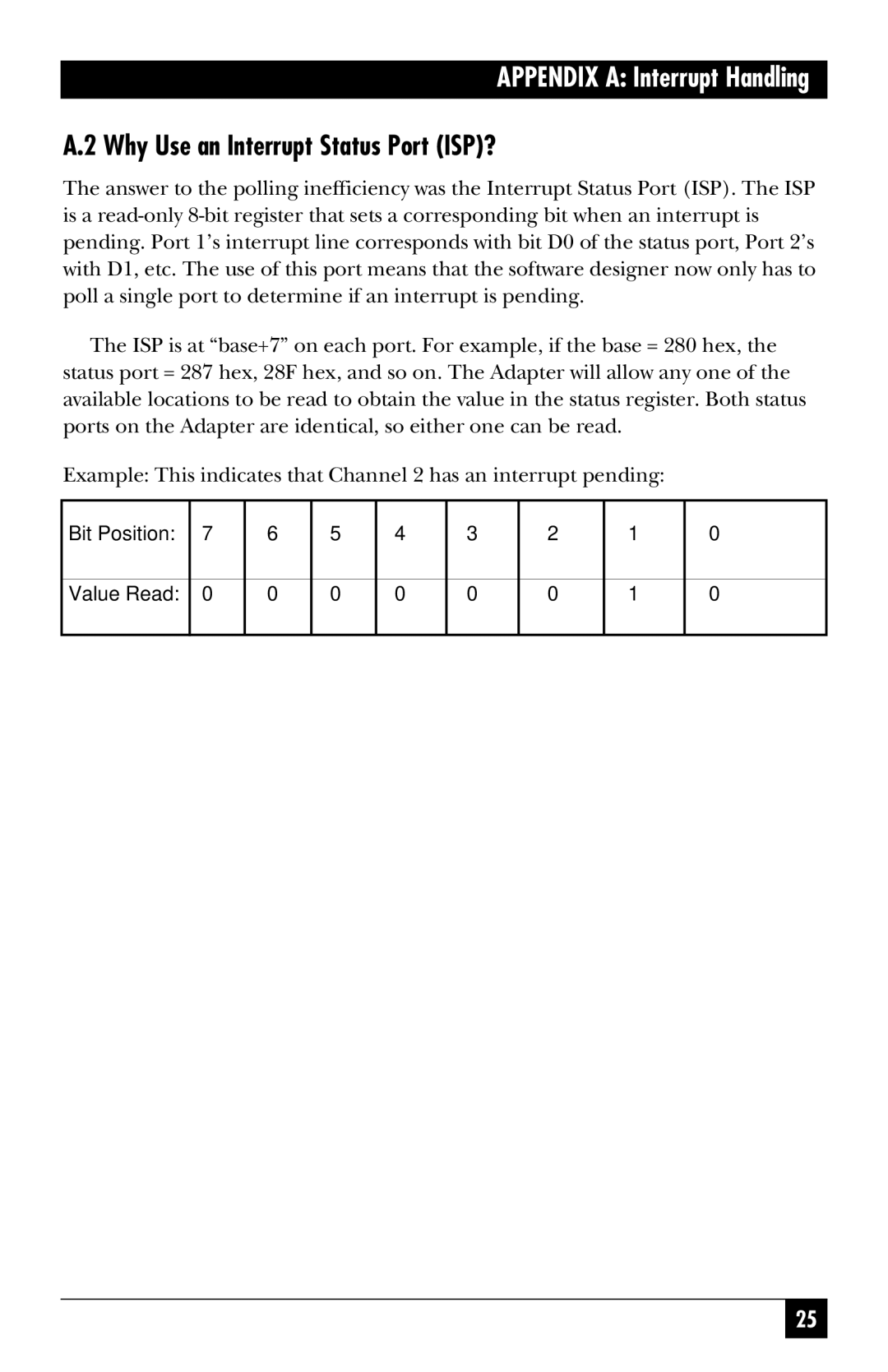
APPENDIX A: Interrupt Handling
A.2 Why Use an Interrupt Status Port (ISP)?
The answer to the polling inefficiency was the Interrupt Status Port (ISP). The ISP is a
The ISP is at “base+7” on each port. For example, if the base = 280 hex, the status port = 287 hex, 28F hex, and so on. The Adapter will allow any one of the available locations to be read to obtain the value in the status register. Both status ports on the Adapter are identical, so either one can be read.
Example: This indicates that Channel 2 has an interrupt pending:
Bit Position:
7
6
5
4
3
2
1
0
Value Read:
0
0
0
0
0
0
1
0
25
